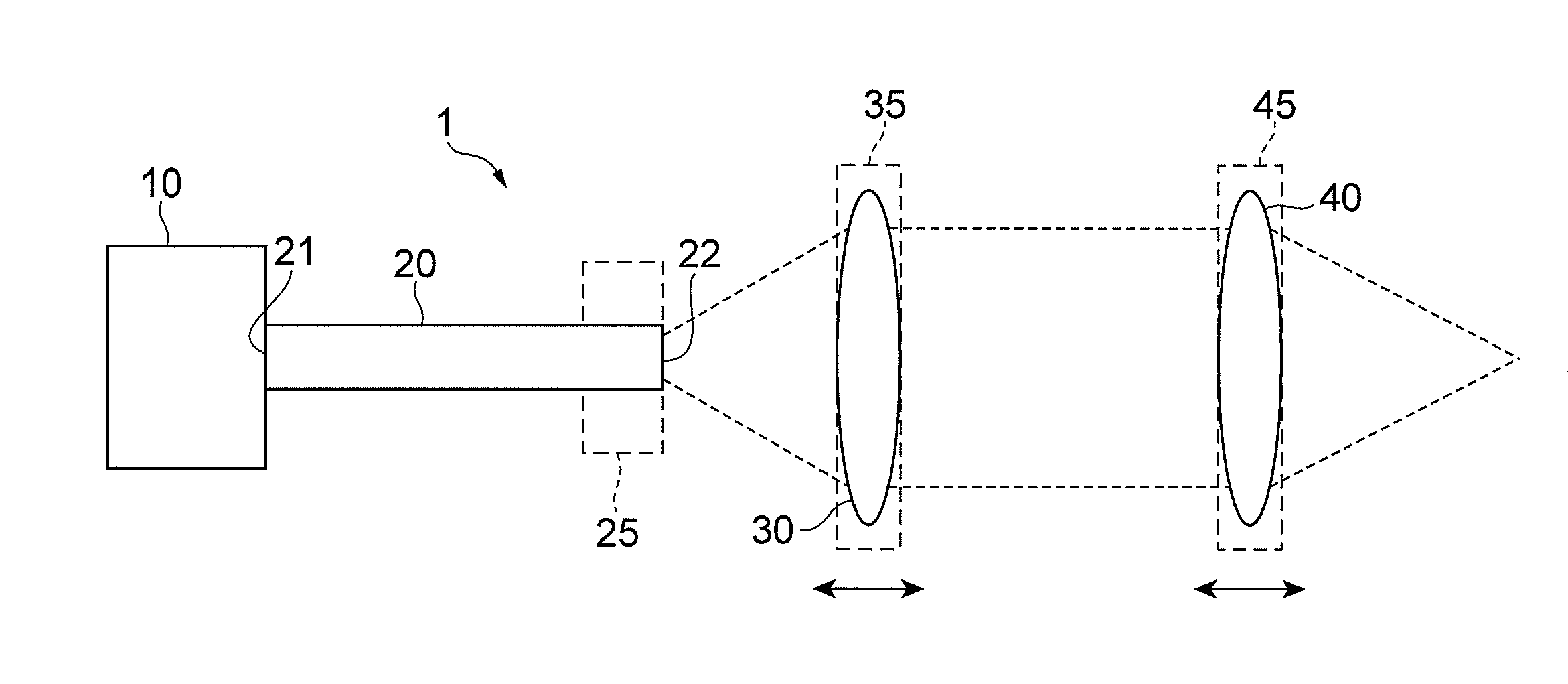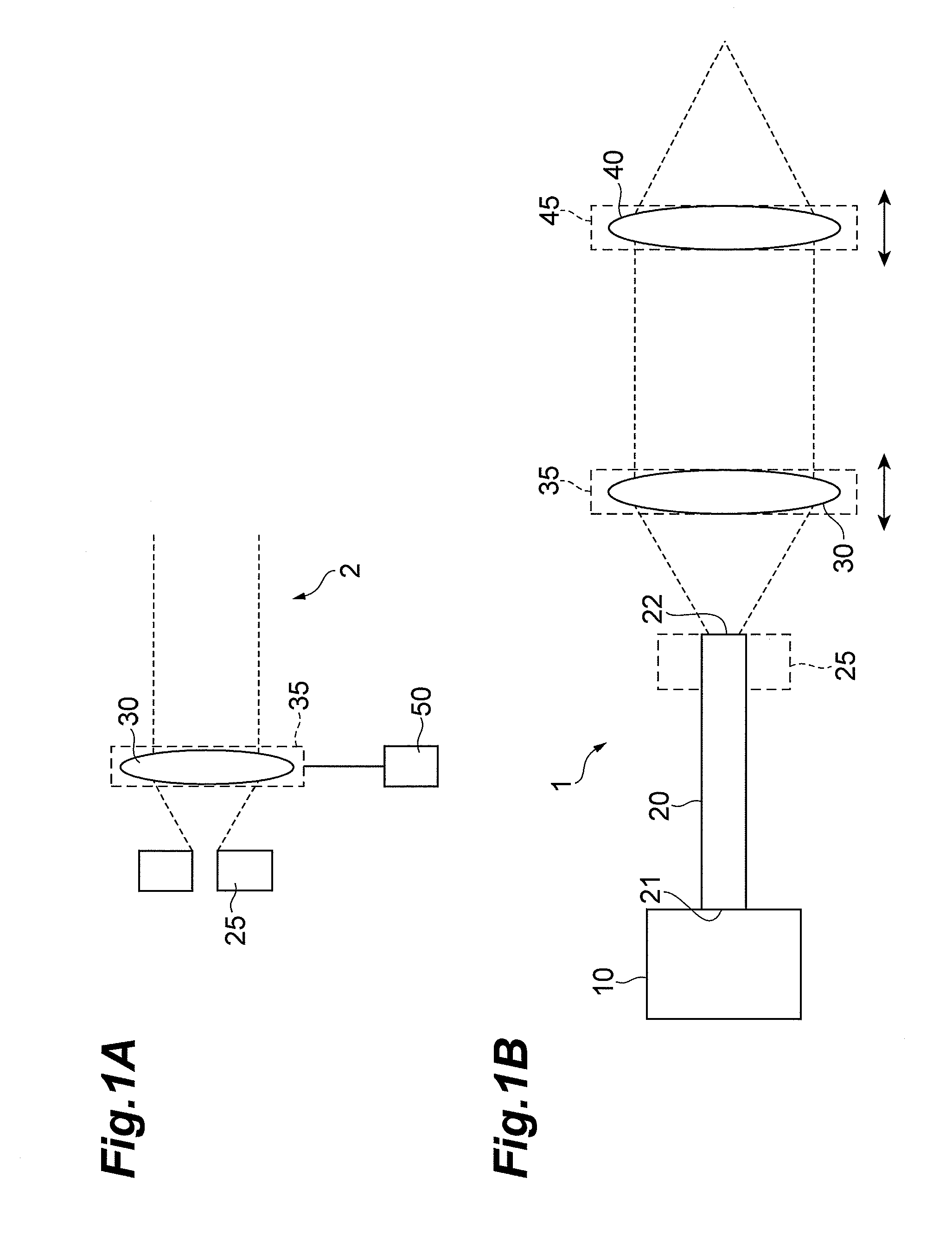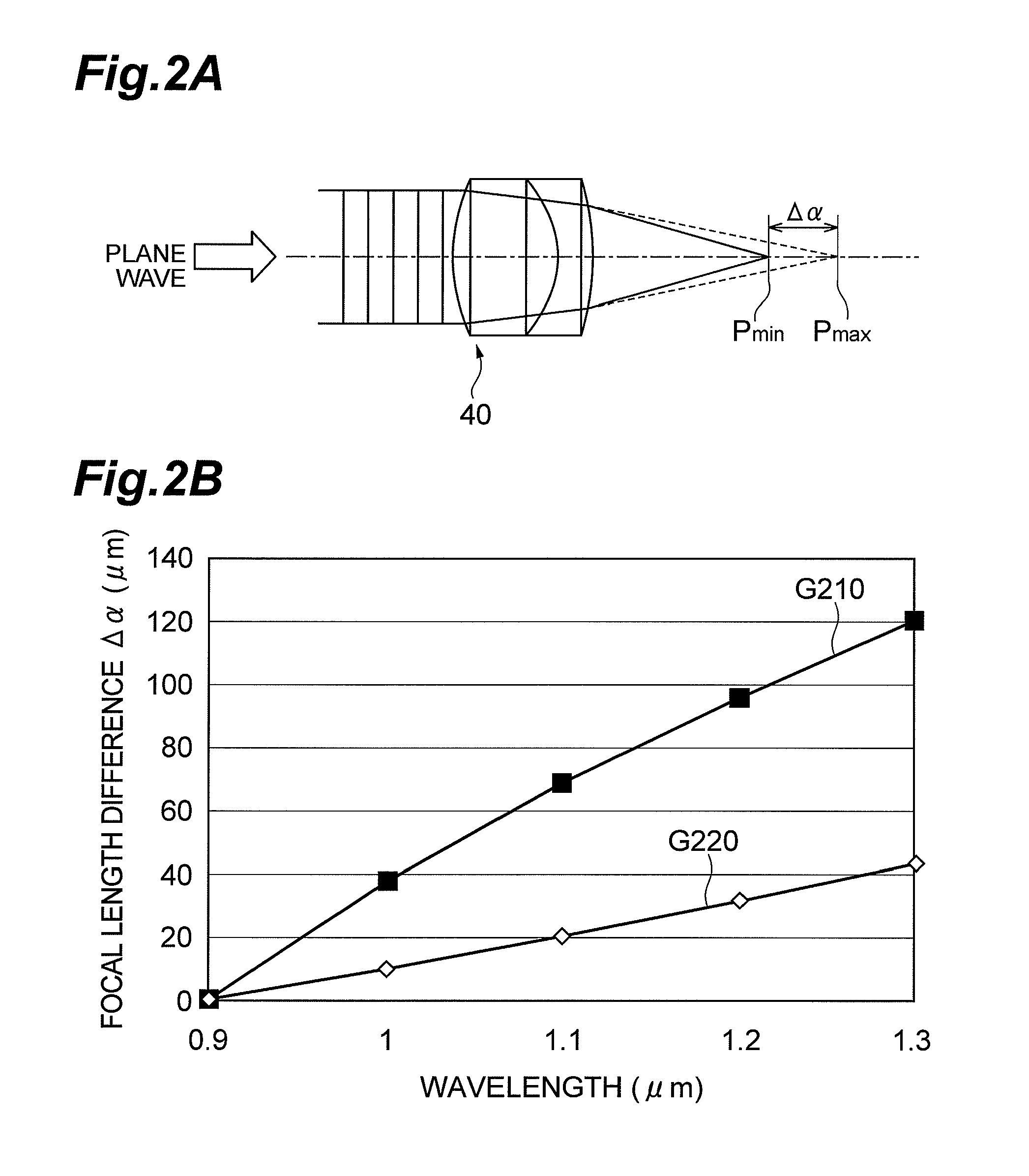Collimator device and laser light source
a collimator and laser light source technology, applied in the field of collimator devices and laser light sources, can solve the problems of chromatic aberration and affect processing accuracy, and achieve the effect of reducing the wavelength-by-wavelength differences of focal positions and reducing the wavelength-by-wavelength differences of positions
- Summary
- Abstract
- Description
- Claims
- Application Information
AI Technical Summary
Benefits of technology
Problems solved by technology
Method used
Image
Examples
first embodiment
[0025]FIGS. 1A and 1B are schematic configuration diagrams of a collimator device 2 and a laser light source 1 according to the first embodiment. The collimator device 2 in FIG. 1A is composed of a laser entrance unit 25 to set a position of emission of a laser beam, a collimating lens 30, a collimating lens setup unit 35 to fix the collimating lens 30, and a position adjustment unit 50 to adjust a position of the laser entrance unit in order to adjust a spacing between a laser exit position (fiber exit end face) 22 of the laser entrance unit 25 and a position of the collimating lens 30. The position adjustment unit 50 may be arranged so as to be able to adjust a position of the collimating lens setup unit 35. The laser light source 1 in FIG. 1B is constructed including a light source 10, an optical fiber 20, the laser entrance unit 25 to fix the end face 22, the collimating lens 30, the collimating lens setup unit 35 to fix the collimating lens 30, a condensing lens 40, and a conde...
second embodiment
[0042]FIG. 9 is a schematic configuration diagram of a laser light source 100 according to the second embodiment. This laser light source 100 according to the second embodiment includes the configuration of the laser light source 1 according to the first embodiment shown in FIG. 1B, and is further provided with a pinhole mask 26 installed at the exit position of the laser beam or at the exit end face 22 of the optical fiber 20 in which single-mode light propagates. A pinhole 260 is formed in the pinhole mask 26 and the size (aperture diameter) of the pinhole 260 is approximately equal to or 10% smaller than the mode field diameter of the optical fiber 20 for the shortest wavelength component out of wavelength components of the polychromatic light emitted from the polychromatic light source 10. The pinhole mask 26 is preferably one having the thickness as small as possible, about 100 μm or less. When the pinhole mask 26 is thicker than it, the sectional shape of the pinhole 260 is pr...
PUM
| Property | Measurement | Unit |
|---|---|---|
| distance | aaaaa | aaaaa |
| spectrum width | aaaaa | aaaaa |
| wavelength | aaaaa | aaaaa |
Abstract
Description
Claims
Application Information
 Login to View More
Login to View More - R&D
- Intellectual Property
- Life Sciences
- Materials
- Tech Scout
- Unparalleled Data Quality
- Higher Quality Content
- 60% Fewer Hallucinations
Browse by: Latest US Patents, China's latest patents, Technical Efficacy Thesaurus, Application Domain, Technology Topic, Popular Technical Reports.
© 2025 PatSnap. All rights reserved.Legal|Privacy policy|Modern Slavery Act Transparency Statement|Sitemap|About US| Contact US: help@patsnap.com



